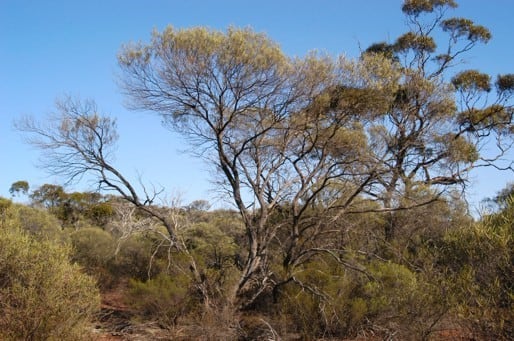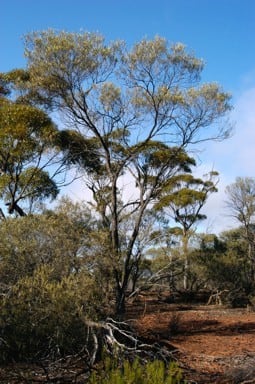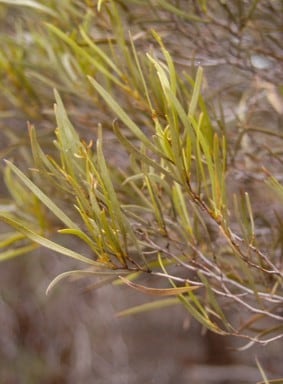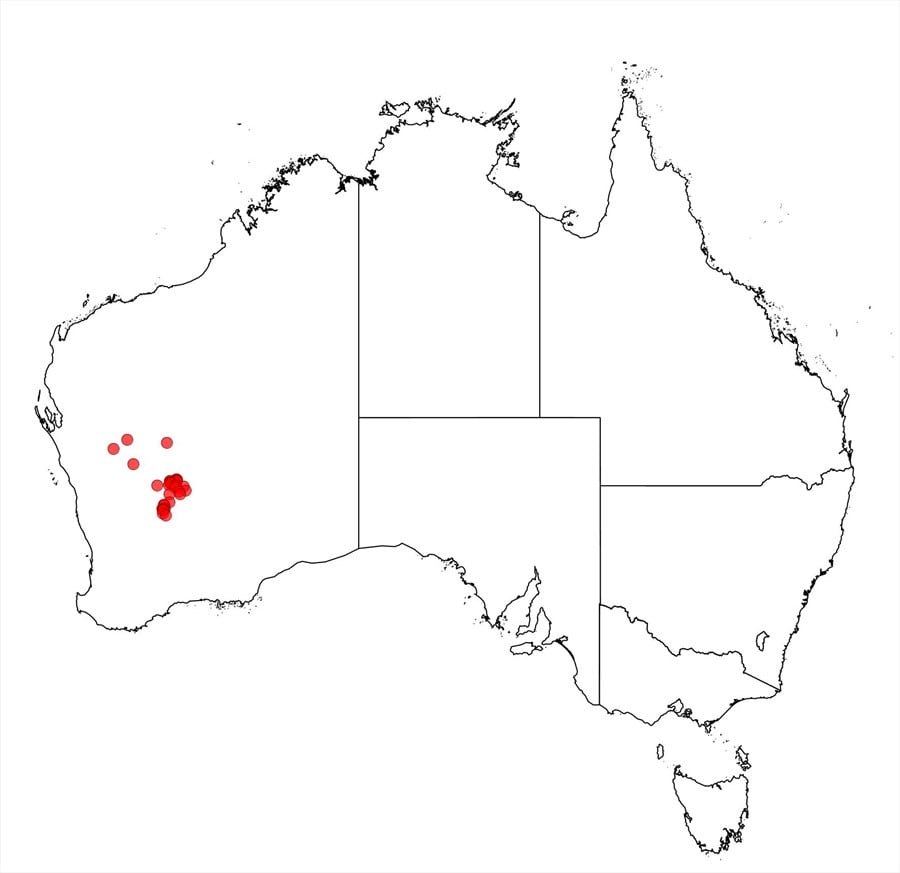Acacia cockertoniana Maslin
WATTLE
Acacias of Australia
Family
Fabaceae
Distribution
Discontinuous distribution, occurring in the vicinity of L. Barlee and Mt Magnet, on Mt Jackson, and on the Die Hardy Ra. and Windarling Ra., W.A.
Description
Obconic shrub or trees 3–6 (–7) m high, main stems and upper branches slightly crooked, crowns greyish green with a silvery sheen. Branchlets resin-ribbed at extremities, sericeous between ribs. Phyllodes mostly erect, flat, the apices acute and curved to uncinate, straight to shallowly curved or sometimes shallowly sigmoid, narrowly linear to linear elliptic or linear oblanceolate, narrowed at base, 5–15 (–17) cm long, (1–) 2.5–5 (–6) mm wide, curved to uncinate, not rigid, minutely sericeous mostly between the nerves, mid-green to dark grey-green, often drying darkish green tinged yellowish brown, resinous with a slight unpleasant musky odour; with numerous, relatively broad (0.1–0.2 mm wide), parallel, longitudinal nerves. Inflorescences simple, 1 or 2 per axil; peduncles 4–6 (–12) mm long, ±glabrous; heads commonly obloid, light golden. Flowers 5-merous, sepals free or very shortly united at base. Pods pendulous, linear, straight to shallowly curved, (4–) 6–12 cm long, 3–5 mm wide, thinly crustaceous, ±flat, mostly not constricted between seed, sericeous between the few, ±prominent, sparingly anastomosing longitudinal nerves. Seeds longitudinal, oblong to narrowly oblong, 4–4.5 mm long, mid-brown; aril terminal.
Phenology
Flowers Oct.–Dec. and possibly Jan.
Habitat
Restricted to Banded Iron Formation (BIF) areas; grows in iron-rich soils in dense Acacia shrubland.
Specimens
W.A.: Mt Magnet, Harmony Gold Minesite, S.Kern & D.True 12036 (NSW, PERTH); eastern extremity of Windarling Ra., B.R.Maslin 8617 (AD, PERTH); Coolwater paddock, L.Barlee, H.Pringle 3984 (NSW, PERTH).
Notes
A related entity of uncertain taxonomic status from the Jack Hills (c. 200 km NE of Mt Magnet), A. sp. Jack Hills (R.Meissner & Y.Caruso 4), appears related to A. cockertoniana, fide B.R.Maslin, Nuytsia 17: 252 (2007) for discussion.
Appears most closely related to the more easterly distributed A. balsamea, which differs most obviously in its normally terete phyllodes, ±moniliform pods and generally smaller growth form. The relationship between a rare flat phyllode variant of A. balsamea and A. cockertoniana requires further study, see B.R.Maslin, Nuytsia 17: 251 (2007) for discussion. Also similar to A. thoma which is a smaller plant with flowers arranged in spikes 1–2.5 cm long, pods submoniliform and phyllode nerves more numerous, finer and not covered by resin.
FOA Reference
Data derived from Flora of Australia Volumes 11A (2001), 11B (2001) and 12 (1998), products of ABRS, ©Commonwealth of Australia
Author
B.R.Maslin, J.Reid
This identification key and fact sheets are available as a mobile application:
URL: https://apps.lucidcentral.org/wattle/
© Copyright 2018. All rights reserved.












